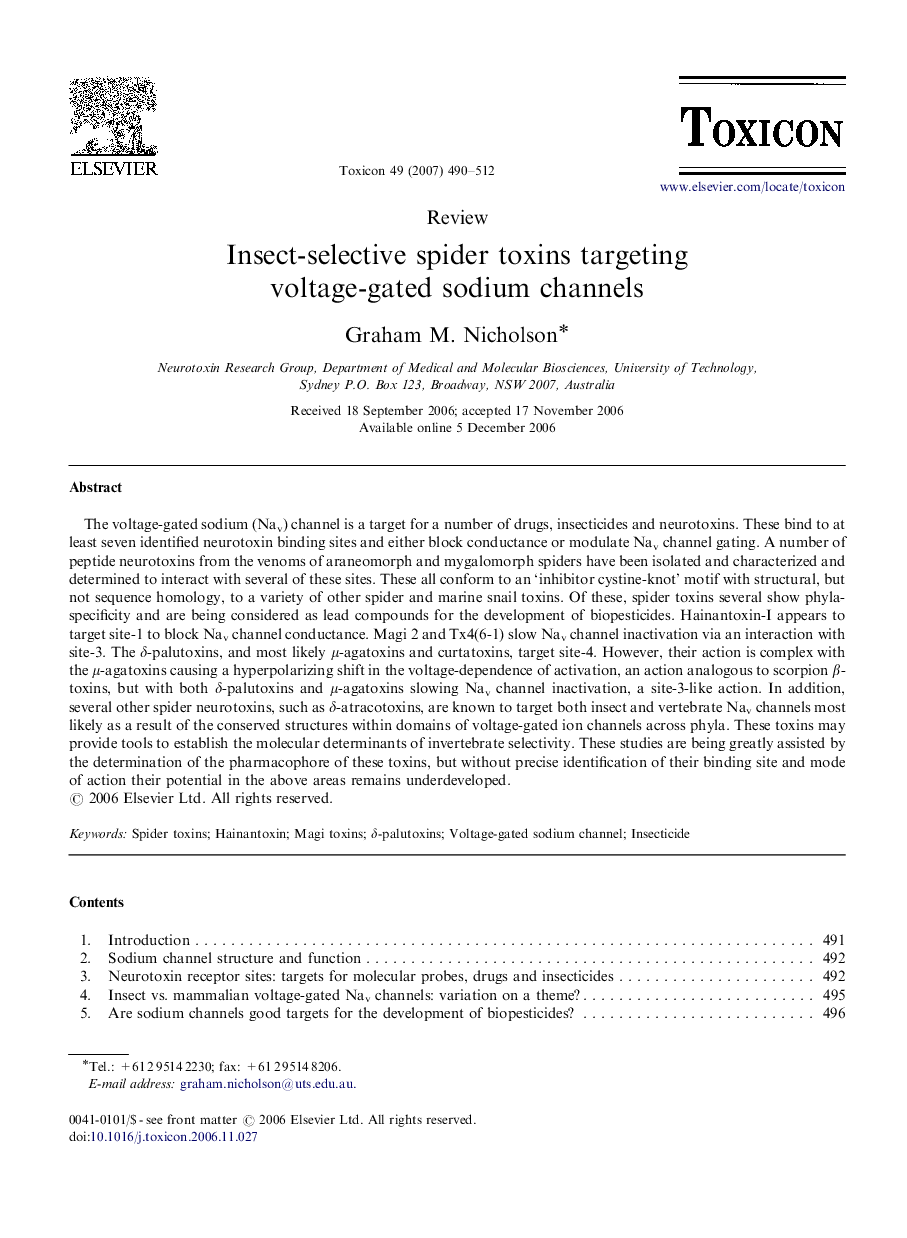| Article ID | Journal | Published Year | Pages | File Type |
|---|---|---|---|---|
| 10880363 | Toxicon | 2007 | 23 Pages |
Abstract
The voltage-gated sodium (Nav) channel is a target for a number of drugs, insecticides and neurotoxins. These bind to at least seven identified neurotoxin binding sites and either block conductance or modulate Nav channel gating. A number of peptide neurotoxins from the venoms of araneomorph and mygalomorph spiders have been isolated and characterized and determined to interact with several of these sites. These all conform to an 'inhibitor cystine-knot' motif with structural, but not sequence homology, to a variety of other spider and marine snail toxins. Of these, spider toxins several show phyla-specificity and are being considered as lead compounds for the development of biopesticides. Hainantoxin-I appears to target site-1 to block Nav channel conductance. Magi 2 and Tx4(6-1) slow Nav channel inactivation via an interaction with site-3. The δ-palutoxins, and most likely μ-agatoxins and curtatoxins, target site-4. However, their action is complex with the μ-agatoxins causing a hyperpolarizing shift in the voltage-dependence of activation, an action analogous to scorpion β-toxins, but with both δ-palutoxins and μ-agatoxins slowing Nav channel inactivation, a site-3-like action. In addition, several other spider neurotoxins, such as δ-atracotoxins, are known to target both insect and vertebrate Nav channels most likely as a result of the conserved structures within domains of voltage-gated ion channels across phyla. These toxins may provide tools to establish the molecular determinants of invertebrate selectivity. These studies are being greatly assisted by the determination of the pharmacophore of these toxins, but without precise identification of their binding site and mode of action their potential in the above areas remains underdeveloped.
Related Topics
Life Sciences
Biochemistry, Genetics and Molecular Biology
Biochemistry, Genetics and Molecular Biology (General)
Authors
Graham M. Nicholson,
